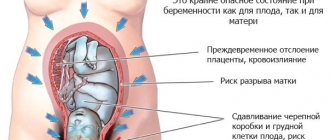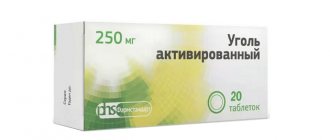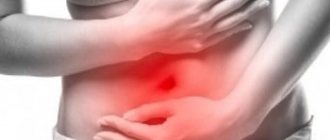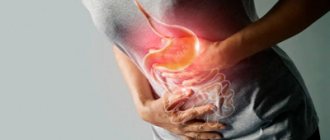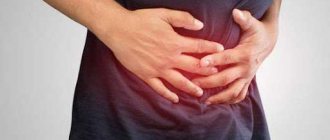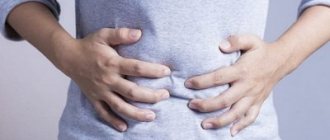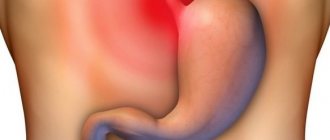Is it true that FGDS (stomach examination) takes only a few minutes?
FGDS is a method of visual examination of the esophagus, stomach and duodenum using a special apparatus - fiber or video endoscope. It is necessary to carefully examine every centimeter of the internal surface of these organs, completely straighten the gastric folds, and go beyond all the bends of these organs. Therefore, a high-quality gastroscopy cannot take 1-2 minutes. On average, video esophagogastroduodenoscopy lasts from 5 to 10 minutes, especially if techniques that improve visualization are used - virtual or chemical chromoscopy, ZOOM, a Helicobacter test is performed, and a biopsy is taken. Paradoxically, high technologies in endoscopy do not reduce, but lengthen the examination time: the greater flow of information received by the doctor requires more time for an adequate assessment and correct interpretation of the data obtained.
You can find out more about the service and its cost here >>
What does a gastric biopsy mean?
This is a diagnostic method that involves taking a tissue sample from a changed area of the organ mucosa for subsequent examination under a microscope (histology). A biopsy of the stomach is taken during gastroscopy - an examination with an endoscope.
Everything happens with the help of small forceps that are in the endoscope. A piece of tissue is analyzed at high magnification, and based on the results, the doctor can draw conclusions about:
- Degree and activity of the disease.
- The presence of Helicobacter pylori bacteria on the walls of the stomach.
- The nature of the neoplasm (benign or malignant).
- Precancerous changes in the mucous membrane (dysplasia, metaplasia).
Gastric biopsy with histology is considered the gold standard and a mandatory procedure for suspected cancer.
For the accuracy and information content of a histological examination, it is significantly influenced by where the tissue sample was taken and the number of samples. So, in case of inflammation of the mucous membrane as a whole, it is worth taking tissue samples from different parts of the stomach, and in case of ulcers or large tumors, pieces from different parts of the pathological area.
The size of the tissue sample is very small - about 2-3 mm, such a wound will not leave a serious mark in the stomach. A biopsy, like gastroscopy of the stomach, is a painless process (the maximum that the patient feels is discomfort and false vomiting). For greater comfort, endoscopic gastric biopsy can be performed under medically induced sleep.
How long it takes to perform a gastric biopsy depends on the number of samples taken and the testing methods. Typically, the results of a gastric biopsy are available within a few days. The decoding is carried out by the attending physician.
Is it true that you can’t even drink a sip of water before an FGDS?
Of course, you should not take food or liquid before the examination, especially before examinations under anesthesia, because During the examination, the liquid contained in the stomach will certainly flow out, parallel to the endoscope. In addition, suctioning even transparent contents from the stomach lengthens the manipulation time.
If the patient needs to take any medication every morning, such as, for example, you have to take medications for high blood pressure, you should take it no later than 6-7 in the morning, washing it down with strictly ONE sip of water.
Is it true that the doctor will determine Helicobacter pylori analysis immediately during the procedure? And is he important?
During the study, it is possible to perform the so-called. “quick urease test” for helicobacteriosis, for this, a small piece of mucous membrane is taken from the stomach, placed on a test system containing an indicator dye and urea, and by the change in its color after 5 minutes we have a definite result. The technique is based on the ability of Helicobacter to break down urea, which causes a change in the color of the indicator. However, one must understand that tests in rare cases can be falsely negative (including against the background of ongoing or recently administered antibiotic therapy), because HP bacteria can have several different forms of existence, and some of these forms do not metabolize urease. A correctly performed rapid test cannot be false positive.
Is it true that it is better to do a colonoscopy under general anesthesia?
Here you always need to take an individual approach. In any case, the procedure cannot be called pleasant. Definitely, examination under anesthesia is preferable in patients who have undergone traditional (also known as “cavitary, open”) operations on the abdominal and pelvic organs; in patients with irritable bowel syndrome and congenital elongation of the sigmoid colon (dolichosigma); in patients with ulcerative colitis and Crohn's disease, because in such situations, the examination can be painful and difficult to endure without anesthesia. And, of course, patients who are simply very afraid of the procedure should be examined under anesthesia, because... For such people, the waiting, preparation, and the procedure itself are emotionally difficult. Videocolonoscopy in a state of medicated sleep >>
Why is a gastric biopsy necessary?
The procedure is quite often prescribed in gastroenterology to clarify the following diagnoses:
- Gastritis.
- Peptic ulcer of the stomach and duodenum (for pathologies in the duodenum, fibrogastroduodenoscopy (EGD) of the stomach with a biopsy is performed).
- Dysplasia (cell degeneration).
- GERD.
- Polyps.
- Tumors of any nature.
- Nonspecific ulcerative colitis and other inflammatory diseases of the stomach and intestines.
A gastric biopsy is also required to test for Helicobacter and lactase deficiency.
Is it true that the tubes of the FGDS apparatus have different diameters? What is the smallest diameter?
Indeed, modern videogastroduodenoscopes have different diameters, because needed for different purposes. Therapeutic (also known as operating) gastroscopes, as a rule, have the largest diameter (about 11 mm), because they should accommodate a wide instrumental channel, sometimes more than one. Gastroscopes for diagnostic purposes have an average diameter of 8-9 mm, because... also contain an instrumental channel of at least 2.8 mm, and endoscopes of this type have a larger viewing angle, which reduces examination time and increases the likelihood of identifying small lesions. Ultrathin and transnasal endoscopes have the smallest diameter (5-6 mm). An ultrathin device can be used to enter pathologically narrowed parts of the gastrointestinal tract - for example, behind a scar narrowing of the esophagus - when it is impossible to pass a regular gastroscope through it. The transnasal device is designed to conduct research through the nose. Due to the presence of a narrower field of view, as well as a greater softness of the working part, examination with a thin device takes slightly longer than with a standard one. However, the tolerability of the study (especially when performed through the nose) is usually good. Ultrathin devices are also used to perform studies on children.
Consequences and complications after prostate biopsy
The prostate biopsy procedure is generally well tolerated by patients. You can read more about this procedure in the articles “Transrectal prostate biopsy” and “Perineal prostate biopsy”.
Why do complications occur after prostate biopsy?
The incidence of complications does not depend on the number of biopsy procedures, the number of punctures and the location of the needle during the procedure.
Factors of infectious complications after prostate biopsy
High risk:
- diabetes,
- weakened immune system,
- taking steroids or other immunosuppressants.
Moderate risk:
- resistance to most antibiotics - usually with a history of long-term unsuccessful antibacterial treatment,
- history of infections after prostate biopsy.
In addition, complications after the procedure may occur if the doctor’s instructions are not followed:
- neglect of recommendations for taking antibacterial drugs and other medications;
- errors in the diet (for more details, see the article “Diet after prostate biopsy”),
- neglecting the restriction on physical activity after the biopsy.
What consequences and complications are possible after a prostate biopsy?
Rectal discomfort after prostate biopsy
This is a fairly common complaint that does not require any intervention and usually goes away on its own. Typically, patients cannot accurately express the nature of the discomfort. Literally it sounds something like this: “There is no pain, but there is a feeling that there was something there.” To relieve discomfort, we prescribe non-steroidal anti-inflammatory drugs, which help avoid the occurrence of such discomfort.
Bleeding as a consequence after prostate biopsy
One of the most common sequelae following prostate biopsy is bleeding, which may manifest as hematuria, hematospermia, or rectal bleeding. For patients without coagulopathies (blood clotting disorders), the incidence of these complications depends on the use of anticoagulant drugs and the level of blood flow in the prostate gland. Hematuria (blood in the urine) after prostate biopsy is the most common occurrence after the procedure, occurring in up to 74.4% of cases. Hematospermia (blood in semen) occurs in 14.5% of cases, rectal bleeding – 1.2%. Hematuria is expressed as urine turning pink. On average, the color of urine becomes normal after 2-3 days. Subsequently, colored urine remains for another 2-3 days at the beginning or at the end of urination.
It should be said that the described scenario develops in the vast majority of patients. However, each organism is individual and the duration of these events may vary somewhat in the time interval.
As a rule, the blood impurities go away on their own. If the contamination continues, you should consult a doctor. You will be prescribed bed rest, plenty of fluids and appropriate therapy.
Infectious complications and consequences after prostate biopsy
Fluoroquinolones are the most commonly prescribed antibiotic (in 93% of cases worldwide). It has been proven that antibacterial prophylaxis significantly reduces the risk of developing bacteriuria, bacteremia, fever, and urinary tract infections.
In 2-4% of cases, after performing a transrectal biopsy, an infectious complication occurs as a result of bacterial penetration of E. coli through the rectal mucosa into the urinary tract.
Acute bacterial prostatitis occurs as a consequence in 1% of cases and is characterized by pain in the perineum, fever, chills, dysuria or polyuria. In this case, hospitalization is necessary to prevent the spread of sepsis and the involvement of neighboring organs (appendages and testicles) in the infectious process. Severe consequences occur rarely, according to global statistics, less than 0.6%.
Urinary retention is another possible consequence after prostate biopsy.
Urinary retention occurs in 0.2 to 1.7% of cases. This consequence is usually temporary and does not require surgical intervention.
What are the most dangerous complications after prostate biopsy?
You must immediately contact your doctor or call an ambulance if:
- lack of urination for more than 8 hours;
- intense blood in urine or stool for more than 8 hours;
- high body temperature.
What is the treatment mechanism for complications after prostate biopsy?
Typically, the course of taking antibacterial drugs includes 5 days. Depending on the indications, if infectious complications occur after a prostate biopsy, a long course of antibiotic therapy is required (for elevated body temperature, urinary tract infections, development of acute bacterial prostatitis) - taking quinolones, sulfamethoxazole-trimethoprim. Antimicrobial therapy can be adjusted based on the body's response to antibiotics, a urine culture test, and an antibiogram. It is extremely rare that hospitalization in a hospital may be required - 0.3% of cases.
How to avoid complications after a prostate biopsy?
By following all the doctor's instructions and properly preparing for a prostate biopsy (stopping taking anticoagulants and antiplatelet agents, taking antibiotics, diet, bowel preparation, limiting exercise on the first day after the procedure), the risk of possible complications and consequences after the procedure is reduced to a minimum.
Back to articles
Is it true that an experienced doctor can determine acidity by eye? Is this indicator necessary?
In some cases, acidity, of course, can sometimes be predicted - in a young patient with duodenal ulcer it will always be significantly increased, and in an elderly person with diffuse mucosal atrophy it will most likely be zero. However, if a gastroenterologist requires acidity indicators, of course, he does not need definitions by eye or the phrases “increased” and “decreased”, but specific pH numbers, and for this there is a modern instrumental study - impedance pH-metry, incl. h. daily monitoring, when the pH of the stomach is measured within 24 hours. Another thing is that it, like every study, requires certain indications, for example, individual selection of therapy for a patient with long-term non-healing ulcers, or, for example, making a decision on the need for surgery. Ordinary Helicobacter-associated gastritis or an uncomplicated ulcer, of course, does not require such a study.
The clinic regularly offers favorable offers for video gastroscopy.
Find out the cost of the procedure “Videogastroscopy (EGD)”
